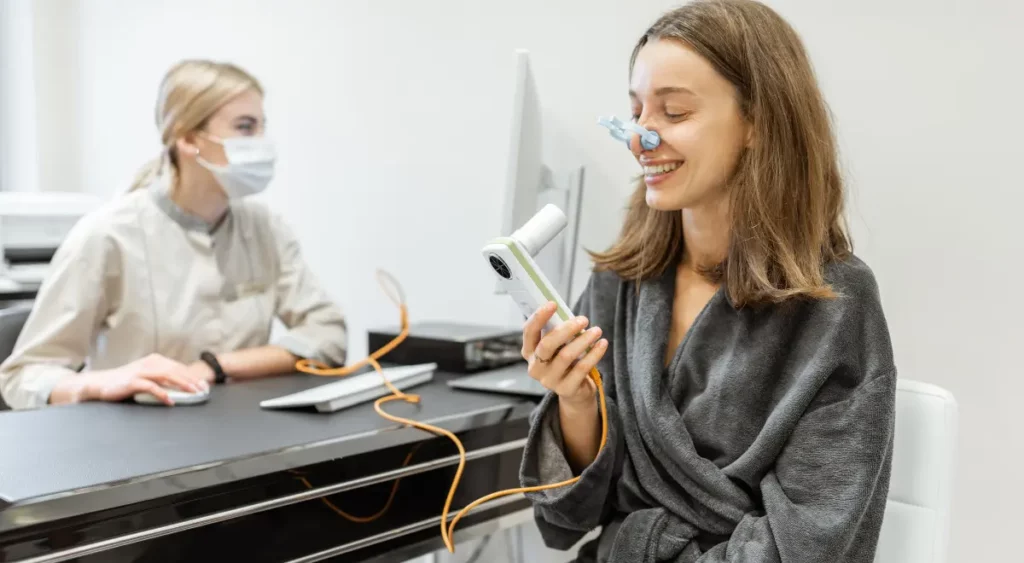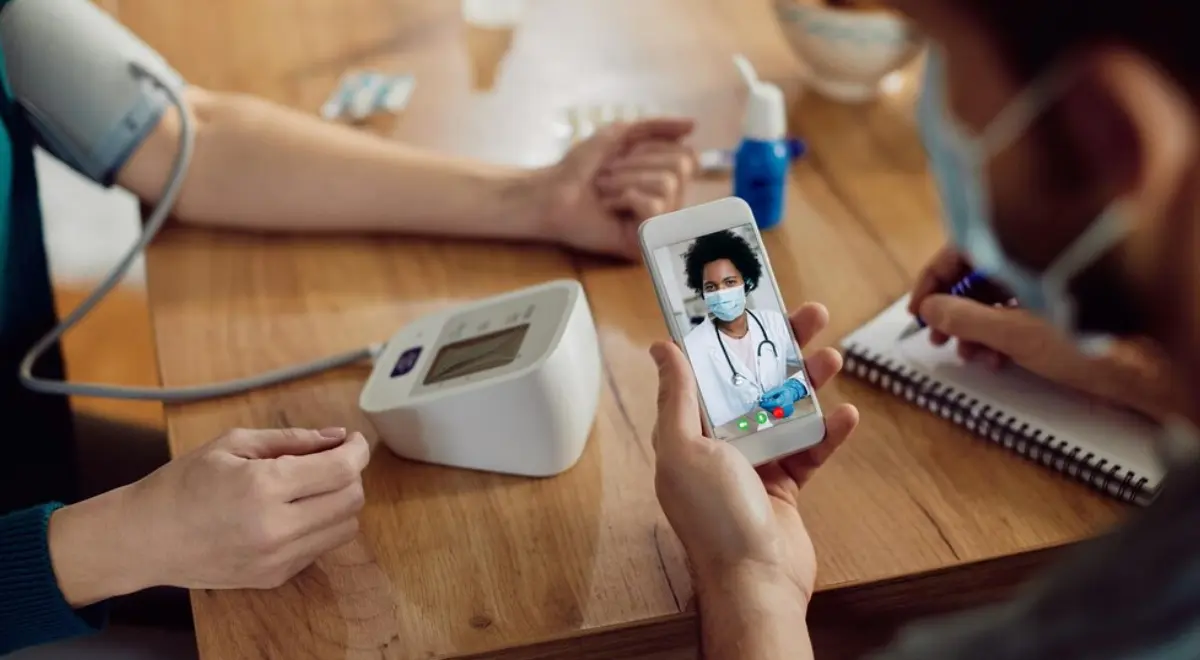Remote Patient Monitoring (RPM) For Respiratory & Pulmonary Diseases

Chronic respiratory diseases, such as Asthma and Chronic Obstructive Pulmonary Disease (COPD) are on constant rise due to changing environmental conditions and lifestyle. These diseases affect the airways and other structures in the lungs and impact both children as well as adults globally. While over 262 million people have asthma, around 300 million are diagnosed with COPD.
A recent study conducted on Remote Patient Monitoring (RPM) indicates that this remote care technology could help address the respiratory diseases and infections by improving the care delivery for patients along with monitoring respiratory rates and other pulmonary functions.
In this blog, we’ll provide insights on chronic respiratory conditions and role of remote patient monitoring in addressing these concerns.
Remote Patient Monitoring Outcomes For Respiratory Conditions
A recent study published in the Journal of Allergy and Clinical Immunology analyzed the role of remote patient monitoring in managing asthma and respiratory allergies among chronically ill patients.
As predicted, remote patient monitoring detected physiological abnormalities in majority of patients. After RPM sessions, 99.1% patient adherence was observed with early detection of underlying respiratory conditions that led to timely prescription management, decreased episodes of shortness of breath, reduced need for inhalers, and improved symptom management.
The conclusion of this study depicted that RPM is crucial for patients with chronic respiratory conditions like COPD and asthma, allowing for timely interventions during flare-ups and reducing emergency room visits.
Use Of RPM in Detecting & Managing Chronic Respiratory Conditions
RPM allows you to monitor your lungs’ function, such as how much air you can breathe in and how much oxygen is in your blood. This allows physicians and clinicians to detect any issues early. Patients who are using RPM comparatively made fewer emergency hospital visits than they did previously. Thus demonstrating that RPM can significantly improve asthma and COPD management by providing clinicians with a better strategy to control it over time.
Peak flow meters are excellent at detecting airway obstruction and promote increased awareness and early intervention for Asthma and COPD conditions. A remote peak flow meter is used to monitor patients with chronic respiratory diseases like asthma. This device assists patients and clinicians in making more informed therapy decisions. Remote Peak Flow Monitoring helps to identify elements that trigger symptoms, evaluate the efficacy of treatment regimens, determine drug modifications, and assess the need for emergency care.
RPM for Asthma Management
Using a remote peak flow meter for asthma control results in:
- Increased awareness of disease status
- Decreased recurring asthma episodes
- Decreased emergency care visits
RPM for COPD Management
Detecting COPD early and acting immediately is critical for ensuring better health. RPM increases physicians’ ability to care for and manage their patients’ pulmonary conditions. It can turn out to be a lifeline for people at risk of COPD flare-ups by detecting underlying symptoms before they become serious.
To effectively manage chronic illnesses such as COPD, it is critical to anticipate issues rather than waiting for them to arise. Here are some key reasons why COPD remote patient monitoring is beneficial:
- It makes healthcare simpler and more convenient.
- Physicians may keep a closer check on their patients and better manage their time.
- Reduces the likelihood of needing to visit the hospital by focusing on staying healthy.
- Motivates people to make better decisions in their everyday lives.
- Reduces total healthcare costs.
COPD remote patient monitoring allows clinicians to keep a check on patients who may be at risk, regardless of whether they are receiving long-term care or require immediate assistance. Because COPD symptoms are not always visible, monitoring lung function on a regular basis might help detect issues early and provide treatment quickly.
Role Of RPM Devices In Managing Asthma & COPD
Remote patient monitoring devices allows clinicians to check on patients outside of their in-person visits. It allows them to obtain a wealth of information about their patients’ health in order to make more informed decisions. Since these devices are connected to the RPM software, the readings/ measurements from these devices are automatically transmitted and captured on the software platform. As a result, these devices can make a significant impact in how respiratory health conditions are monitored and controlled.
- Remote Peak Flow Monitoring
Remote peak flow meter measures how fast you can push air out of your lungs when you blow out (exhale) as hard and as fast as possible. They connect to your phone or computer using Bluetooth or cellular technologies. The measurements are securely transmitted to the doctor’s computer, allowing them to monitor your progress.
- Spirometry
Spirometry is a test that determines how well your lungs are functioning by measuring how much air you breathe in and out, as well as how quickly you breathe out. People with COPD can use spirometers at home to assist physicians in monitoring their lung health. Patients should take a deep breath and blow into the spirometer as hard and rapidly as they can. The results determine if the patient’s lungs are deteriorating or if the medication is effective. If a healthcare practitioner notices any changes, they can modify the treatment plan immediately.
- Pulse Oximetry
Pulse oximetry is a method of determining how well your lungs are functioning by pointing a light on your fingertip that helps detect how much oxygen is in your blood. This lets physicians determine whether your body is receiving adequate oxygen from your lungs. People with moderate COPD may not notice when their oxygen levels go dangerously low. Physicians can monitor these levels with a pulse oximeter, however. If the oxygen saturation in your blood falls below 90%, the monitoring device will notify the physician immediately so that they can assist you.
Key Takeaways
Remote patient monitoring has significantly changed how physicians treat and manage chronic respiratory conditions. They may now constantly monitor their patients’ health by checking vitals like respiration and oxygen levels, allowing them to detect problems early and prevent patients from having to go to the hospital.
Remote monitoring also saves money and makes asthma and COPD management easier and more precise. Furthermore, it provides patients greater control over their health.
Boost Asthma & COPD Care Results With HealthArc
Boost your respiratory care with HealthArc’s advanced RPM clinical software and digital health platform focused on smooth patient transition, seamless communication, and enhanced overall patient engagement, ensuring optimal outcomes for both respiratory patients and healthcare providers.
Request a free demo or feel free to talk to our team at +201 885 5571 to learn how we can help you manage your asthma and COPD symptoms with RPM.
Most recent blogs
Categories
- Advanced Primary Care Management
- Behavioral Health Integration
- Cellular Remote Patient Monitoring
- Chronic Care Management
- Chronic Care Management Billing
- Chronic Care Management CPT Codes
- Chronic Care Management Program
- Chronic Care Management Software
- Digital Health Platform
- Principal Care Management
- Principal Care Management CPT Codes
- Remote Care Programs
- Remote Monitoring Devices
- Remote Patient Care
- Remote Patient Monitoring
- Remote Patient Monitoring Billing
- Remote Patient Monitoring CPT Codes
- Remote Patient Monitoring Devices
- Remote Patient Software
- Remote Therapeutic Monitoring
- Remote Therapeutic Monitoring Billing
- Remote Therapeutic Monitoring CPT Codes
- Telemedicine & RPM
- Transitional Care Management
- Transitional Care Management Billing
- Transitional Care Management CPT Codes
Related Posts
- February 21, 2025 | Read Time: 5 mins
RPM’s Role in Identifying Early Symptoms of Chronic Conditions for Prevention
- February 14, 2025 | Read Time: 4 mins
Monitoring Post-Surgical Recovery With RPM Systems
- February 10, 2025 | Read Time: 5 mins






